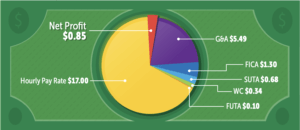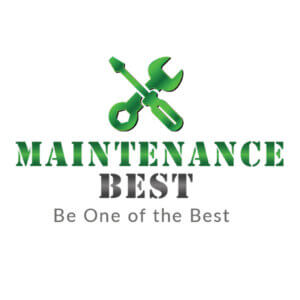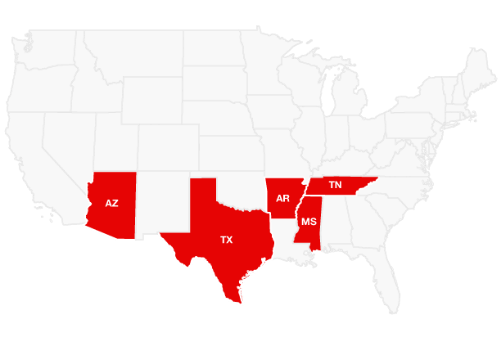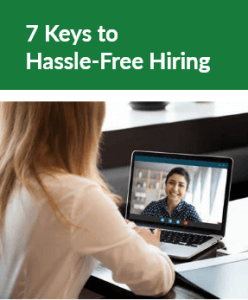Would you believe that larger companies, like Amazon and United Airlines, are using staffing companies to handle many of the personnel aspects of their business? They have made this choice because they have seen there are tremendous financial advantages.
Airlines used to provide everything involved in the passenger experience. From curb-to-curb, airline employees did it all. Food, fuel, baggage handling, even passenger service agents all worked for the airlines. But then the low-cost carriers came along and drove prices down. Even the legacy carriers had to get onboard and look at outsourcing as a means of reducing costs. Now many airlines fly the planes, but everything else is outsourced.
“We outsource everything that we can outsource,” says Warwick Brady, chief operations officer at easyJet. “As long as we can manage it and control it, it gets outsourced.”
Why have airline companies decided to go this route? Because they have realized that their core business is: flying airplanes. They need pilots and flight attendants. They don’t need all the personnel costs, issues, and liabilities that go along with all those other ancillary services.
Outsourcing vs Hiring Directly
You may have considered staffing companies and even gotten a quote. Perhaps your quote was a 40% markup of the regular wage, so it’s understandable to immediately think that there’s no way a Staffing company could ever be cheaper than hiring directly, right? Well, the actual numbers might surprise you. While you might think you’re saving money upfront, using a Staffing company could save your company more in the long run.
The American Staffing Association (ASA) compiled a fact sheet from their Staffing Operations Benchmarking Survey to clarify staffing bill rates. In the below example, ASA found that on an hourly rate of $17, a staffing company would need to charge a minimum bill rate of $25.76 to cover operating expenses and legally mandated labor costs and achieve the industry’s national average net profit rate of 3.3% or $0.85 per hour. (Please keep in mind that labor costs and bill rates are highly affected by the geographic location, the supply/demand for talent, and the area of specialization.)

Hourly Bill Rate: Rate charged to the Host company. The employee’s hourly pay rate + the Staffing company’s mark-up = hourly bill rate.
Hourly Pay Rate: Rate paid to the Staffing employee.
Legally Mandated Labor Costs:
- FICA (7.65%): Social Security (6.20%) and Medicare (1.45%)
- FUTA (0.60%): Federal Unemployment Tax Act (varies by state—minimum used, including maximum potential credits)
- SUTA (4.00%): State Unemployment Tax Act (varies by state)
- WC (1.99%): Workers’ compensation (varies by work type and state)
Mark-up: The percent that a Staffing company charges on top of the employee’s pay rate. This is not to be confused with the Staffing agency’s profit. The mark-up percent includes all labor costs and the Staffing company’s service charge.
G&A: General and administrative expenses (18.70%) for operating and overhead costs such as corporate employee payroll, taxes, and benefits; rent; equipment; and advertising and marketing
Net Profit: What the staffing company earns after all expenses are paid. This is calculated as follows: Staffing Bill Rate – Employee Pay Rate – Mandated, and Indirect Labor Costs = Profit
As you can see from this example, many of the costs are the same whether the Host company pays them or the Staffing company pays them.
Hidden Costs
While the above costs are tangible, we also can’t ignore the other many hidden costs involved that are less obvious and harder to quantify. Just because your company can’t assess the numbers, doesn’t mean they should be forgotten. They are still part of the overall hiring cost to the company.
Time Spent Recruiting: Many of the hidden costs of handling the hiring process in-house are wrapped up in quantifying the Host company’s time spent recruiting and hiring. Recruiters or Human Resource employees spend many hours: preparing and placing job ads, reviewing tens or hundreds of resumes, screening applicants, reaching out to candidates, conducting phone/in-person interviews, conducting background checks, and selecting an individual. Hiring is not an overnight process which is why a Staffing agency can take on most of the time-consuming tasks involved with the hiring process so business owners and managers can allocate their efforts elsewhere.
Productivity Loss: The amount of time it takes to hire is an important factor when it comes to how much an open position can cost a company. Quite simply, you have one less set of hands driving production. The longer a position is open, the higher the cost, due to a loss in productivity and diverting resources. Working with a staffing firm can help decrease the time to hire and help decrease a loss in productivity.
Bad Hires: The U.S. Department of Labor’s estimates that the average cost of a bad hiring decision is at least 30 percent of the individual’s first-year expected earnings. So, for example, if you have an employee with an annual income of $50,000, the cost to the company can be at least $15,000. One way to prevent this is using a temp-to-hire approach may be beneficial for some roles. It provides the opportunity to hire someone on a temporary assignment to evaluate if the candidate is able to meet the needs of the job prior to making a longer-term commitment.
Should Your Company Use a Staffing Company?
Partnering with a staffing agency is more cost-effective than hiring directly after taking all the costs into considerations (both tangible and hidden). Staffing companies also tend to provide employers with better results and more qualified job candidates than they would get on their own. They are the professionals at hiring and they have a database of qualified, trained, tested, and screened candidates at their disposal.
Given all of that, you can see why larger companies like Amazon and United Airlines are shifting to a staffing model even if it’s only for the first three to nine months of employment.
If you have questions or would like more information about any part of this, contact MaintenanceBest to see what we can do for you. Contact Jack Evans (623) 777-0701 or jackevans@www.maintenancebest.com











